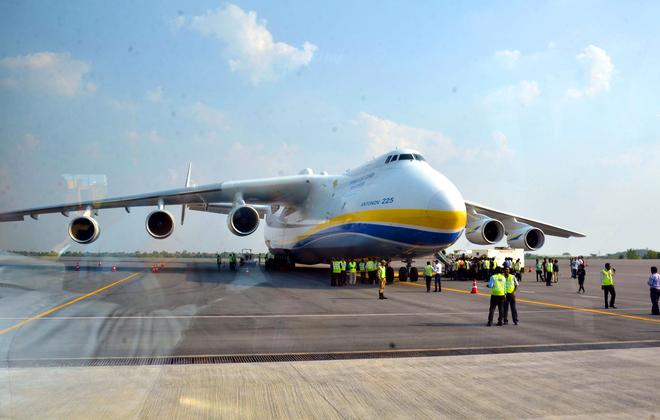The Antonov An-225, a marvel of aviation and the world’s largest cargo plane, was “destroyed” in an attack on its base in Ukraine’s Hostomel/Gostomel airport. Concerns about the giant plane’s fate grew after Russian troops entered Ukraine, and there were reports of attacks on the airport and its environs around February 24, prompting aviation chatter on social media over the last 48 hours about damage, which was mostly speculative and based on grainy images of the airport and its hangars.
“Today the fact was confirmed that as a result of [the] attack and capture of Ukrainian civil Kyiv-Antonov airport (Gostomel) by Russian troops, the largest aircraft in the world, [the] An-225 Mriya, was damaged and burned down,” the Commercial Director of Antonov Airlines wrote in an e-mail to The Hindu from Kyiv, Ukraine, on Monday.
Antonov was a work of Technical art
The plane was being serviced at its home base in Ukraine. The loss of this one-of-a-kind aircraft, which was a true work of technical art, is a huge loss for not only [the] Antonov Company and Ukraine, but the entire aviation world.” There were no other specifics provided.
The “super-heavy transport jet” was legally known as the “Cossack,” its NATO operating code, but the world knew it better by its Ukrainian name, “Mriya,” or “the Dream.”
The six-engine, 84-meter-long behemoth, with its 32-wheel landing gear, took to the skies for the first time on December 21, 1988, primarily to ferry the Buran shuttle orbiter and Energiya carrier rocket components. After a bleak future following the disintegration of the Soviet Union, the plane rebounded back and reinvented itself to take on a variety of missions — and set freight transportation records — enthralling onlookers around the world. It also received substantial technological advancements.
Arrival of Indians
In May 2016, it landed for the first time in India at Hyderabad’s Shamshabad airport on its way to Perth to transport a 117-tonne power generator (from Prague, Czech Republic) to Australian mining. It also played a key role in COVID-19, transporting approximately 100 tonnes of medicines, laboratory kits, medical masks, and personal protective equipment across Europe, Canada, and Africa. After the US completed its involvement in Afghanistan, it was even chartered to transport ‘Puma’ helicopters from Kabul to the United Kingdom.
What happens next is the subject of great discussion. If the “Mriya” cannot be repaired — an estimated $3 billion cost, according to aviation sources — there is still hope in the form of a second, incomplete fuselage at a hidden warehouse in Ukraine.

